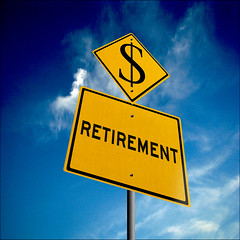A bear market might be good news for young investors looking to buy stocks on the cheap, but budget-priced stocks are thin gruel for retirees and pre-retirees who are relying on their portfolios to fund living expenses. A deep and protracted down market, such as the one we encountered in 2008 through early 2009, carries some takeaways for retired investors or those looking to retire within the next few years.
Get Used to Low Yields (as if you weren't already): True, some market watchers had been warning about the potential for higher interest rates at some point in the not-too-distant future. But that eventuality became even more distant when the Federal Reserve announced that it will hold interest rates near zero through the middle of 2013. That's good news for borrowers and owners of riskier assets, such as stocks, but it's bad news for yield-starved savers.
As a retiree, you probably don’t want to hold more cash than you need to fund one to two years' worth of living expenses, as the opportunity cost of holding too much cash is extreme. Also, don't put up with nonexistent yields from your local bank; shop around and be willing to be flexible. For example, you can create a two-part short-term fund consisting of true cash combined with a high-quality short-term bond fund.
Don't Be Too Quick to Cast Out Treasuries: In recent months there's been a lot of trash talking going on in the Treasury market. Some investors have been avoiding the bonds or even shorting them, saying the bonds' yields are too low and the U.S. deficit is too high. There is also fear that Treasuries will get creamed in a rising-rate environment. And, in the latest bit of ignominy for Treasuries, Standard & Poor's said they can no longer be considered a "risk-free asset."
But the market's recent swoon telegraphed something loud and clear: In a true flight to safety, very few assets will hold up better than U.S. Treasury debt, downgrade or not. That's not to say Treasuries are a screaming buy at this point, and yields are more anemic than ever. But it does argue for not getting too heroic about purging them from your portfolio altogether. If your goal is to find an investment that will zig when your stocks are zagging, it's hard to argue that Treasuries don't deliver.
A Well-Thought-Out Asset Allocation Is Your Best Friend: If you're retired or getting close, by far the best way to ride out periods of market weakness is to pay due attention to your asset allocation and cash reserves. The bucket approach to staging retirement portfolios, whereby you stash enough to cover your near-term expenses in ultra safe securities and hold the rest in long-term securities like bonds and stocks, is an intuitive way to back into the right appropriate asset allocation.
Dollar-Cost-Average Into Inflation Protection: If gloom over the strength of the global economy continues to worsen, inflation-conscious investors might be able to add inflation protection to their portfolios at more advantageous prices than when inflation was grabbing all the headlines. Dollar-cost averaging into investments such as TIPS or commodities will help reduce the odds of buying into inflation fighters when their prices are lofty.
There is no guarantee that diversification, asset allocation and dollar-cost averaging will protect against market risk. These investment strategies do not ensure a profit or protect against loss in a declining market. In addition, since investing by dollar-cost averaging involves continuous investment in securities regardless of fluctuating prices, investors should consider their financial ability to continue purchases through periods of both low and high price levels.

 248.335.7211
248.335.7211
